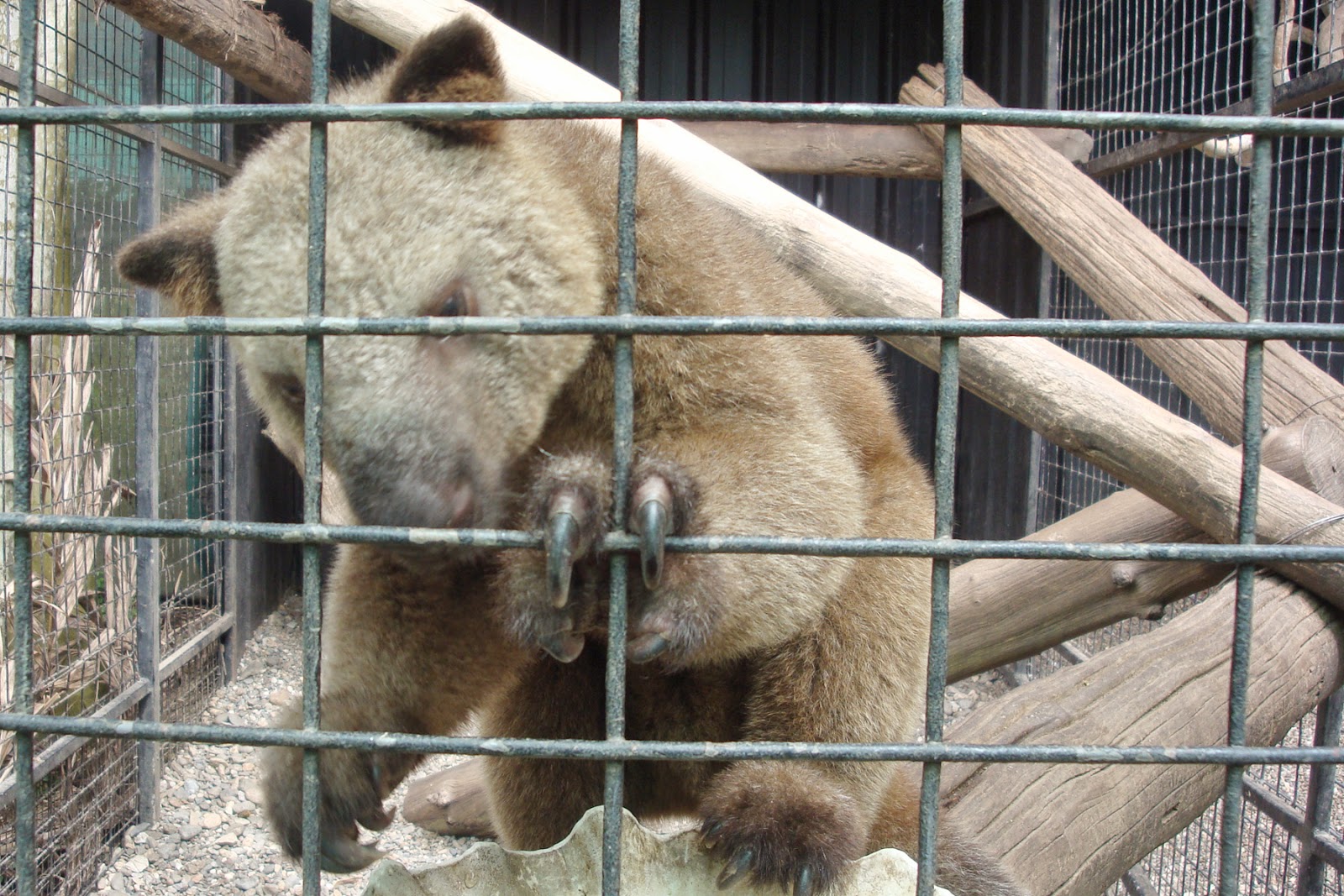 |
| One-year-old Tree Kangaroo joey Nupela with mum this week. |
Tree kangaroos are
incredibly beautiful, unfortunately rare creatures. The first encounter I had
with one was visiting a colleague in Port Moresby, Papua New Guinea. A wealthy
businessman was keeping a number of unhappy-looking tree kangaroos in barren enclosures
(why do some wealthy people feel the need to possess rare and endangered
wildlife when their husbandry is so appalling?).
 |
| This photo was taken in Port Moresby, Papua New Guinea. This Tree Kangaroo was kept by a wealthy businessman, and was going stir crazy in its barren enclosure. |
Different species of tree
kangaroos are found in lowland and mountainous forests in Papua New Guinea,
Indonesia and in patches of Far North Queensland.
Taronga Zoo’s tree
kangaroo joey Nupela was weighed this week, a year after she was born. Since
leaving her mum’s pouch three months ago she has doubled in weight to 3.8kg –
still smaller than your average Aussie cat (around 4.5-5kg).
 |
| Nupela hops on the scales while mum checks out the camera. |
In fact it wasn’t her
first weigh in. Keepers have been doing weekly weigh ins since June, training
Nupela to follow a target and step onto the scales.
“She’s been growing
rapidly and eating incredibly well, putting on about 10 per cent of her body
weight each week,” said keeper Sam Bennett.
Among her fave foods are
corn, grapes, beetroot and more recently eggs. She likes banana skins more than
the banana – which would be handy if you were ever sharing a meal with her.
Nupela was born on
September 4 2013 but no one spotted her til March when she poked her head out
of the pouch. Her mum, Kwikila, and dad Parum, were paired up as part of a
global breeding program.
 |
| Nupela in her mother's pouch. |
The problem if course is
that if we destroy the habitat of these beautiful creatures, we can breed as
many as we want but they won’t be able to be reintroduced into the wild where
they really belong.
 |
| Another earlier snap of Nupela from Taronga Zoo. This is the face of a threatened species. |
Veterinary Imaging
conference
The Australasian
Association of Veterinary Diagnostic Imaging is hosting its conference on
November 1 and 2 – at the Australian Museum. Not only do you get to learn all
about veterinary radiography, ultrasound and advanced imaging modalities, you also
get free entry to the museum all weekend.
For info on speakers and
the program, click here.
To register online, click
here.
Great Dane eats 43.5 socks
Finally one veterinarystory doing the rounds of the internet at the moment is the staggering finding,
on exploratory laparotomy, of 43.5 socks in the stomach of a Great Dane.
The dog, who has not been
named, had been unwell for some time but it wasn’t until radiographs were taken
that a knot of gastric foreign bodies were detected. Socks sound soft and
gentle but inside the gut of a dog (or anyone really) they can cause havoc –
from affecting gastric motility, obstructing gastric outflow (movement of the
stuff in the stomach into the intestines and then beyond), mucosal trauma and
basically pain, pain and more pain. The amazing thing about this case is a) the
dog had to eat 43.5 before anyone twigged and b) that anyone has 22 (21 and a
bit?) pairs of socks. Note, if you DO think your dog has eaten socks, or undies, or hosiery, or really any non-food item, call your vet immediately. I can't tell you how many Friday nights I've spent inducing vomiting to retrieve footy socks...but its a lot less costly, and a lot less risky, than waiting until those things cause an obstruction then having to surgically retrieve them. [Note, inducing vomiting works best within 2-4 hours of ingestion].
Another tip: lockable laundry baskets.
Check out our previous post about foreign bodies here.
